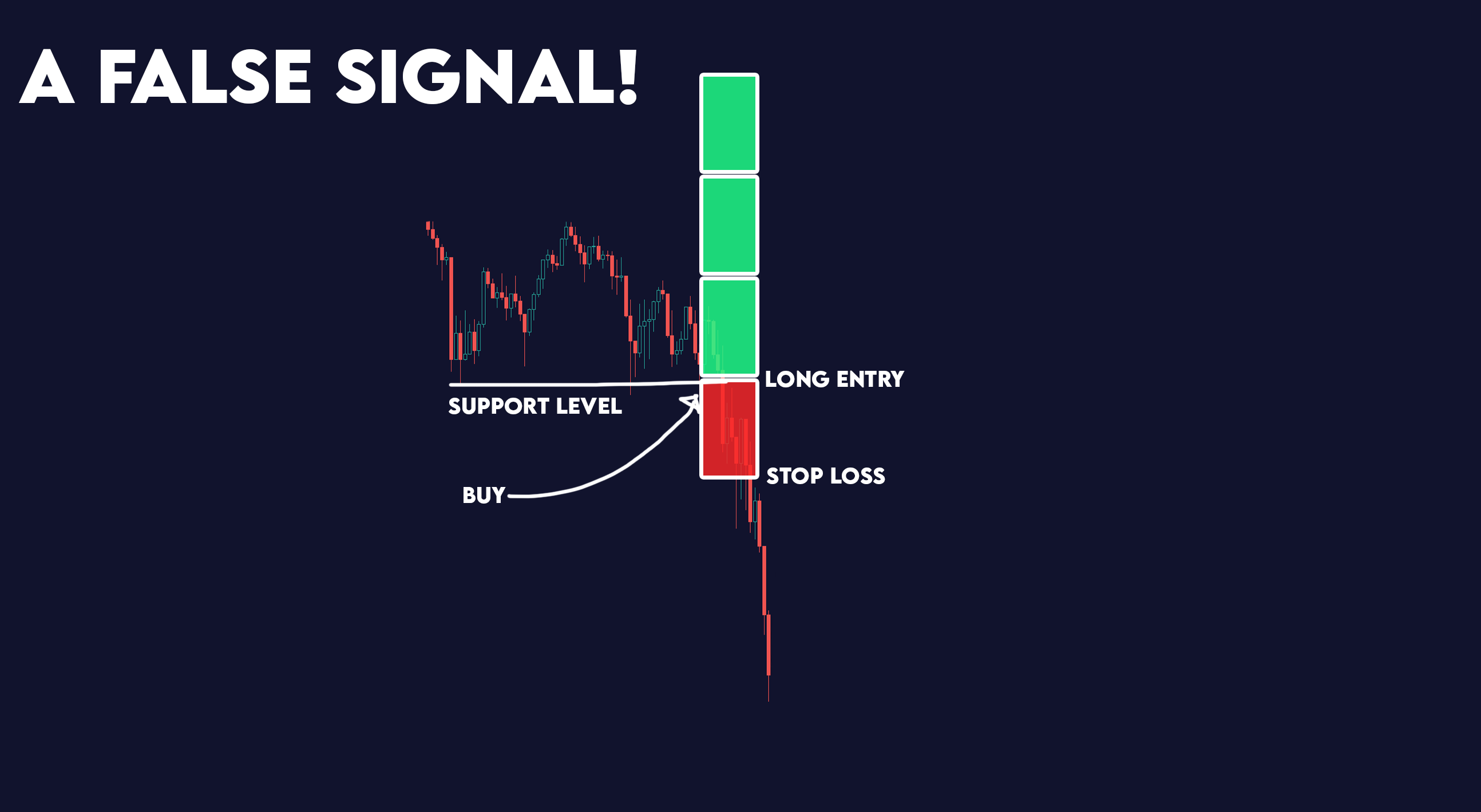A false signal in trading is when an indicator suggests a trade should be made when it is not a good idea. These signals can often lead traders to make incorrect decisions, such as buying when the price is about to fall or selling when it rises.
False signals typically occur due to market volatility, anomalies, or the inherent limitations of the indicators used.
For example, a technical indicator might signal an ‘overbought’ condition in a persistently rising market, accidentally baiting you into selling. Still, the market continues to climb, resulting in a missed opportunity or a loss if you assume a short position.
How to avoid false signals in trading?
The best way to avoid false signals in trading is by using multiple indicators and setting up a trading plan with risk management. You should always cross-reference the data and compare signals between indicators to accurately predict future prices and market movement.
Additionally, traders use risk management techniques and specific trading plans to limit losses in case of false signals. The thing is, you cannot avoid false signals 100% of the time. That’s why risk management is essential.
1. Use Multiple Time Frames: Many of us make the mistake of relying too heavily on one-time frames. Multiple time frames can help confirm a signal and reduce the risk of false signals.
2. Use Multiple Technical Indicators: Technical indicators are tools for analyzing price movements. Don’t get stuck on just one indicator you always use. It’s better to combine a few so they can cross-reference each other.
3. Use Fundamental Analysis: Fundamental analysis studies economic and financial data to understand the underlying forces driving the market. One of the most common ways is to look at the order book. The volume of the trading activity should follow the trend hinted by the signal be it bearish or bullish. If not, there are chances it’s a false signal.
4. Use Risk Management: Risk management is essential to trading. Stop–loss orders, position sizing, and other risk management techniques can help reduce the risk of false signals.
5. Practice Patience: False signals often occur when traders get too eager to enter a trade. Don’t make a trade you’re unsure about. Be patient and wait for confirmation from the market. You don’t necessarily have to enter the market right at the first breakout.
6. Trading Biases: It is important to remember that even the most experienced traders can be vulnerable to false signals. The trick is to remain open and willing to challenge your analysis. Try and consider as many interpretations of your analysis as you can. Look for any anomalies or discrepancies in the data you may have missed.
7. Market Manipulation: Manipulation can create false signals by artificially inflating the price of a security or by creating an artificial demand for security. It is important to be aware of the potential for manipulation and to take steps to avoid being taken advantage of by manipulators.
8. Latest Updates: Stay up-to-date with news and events that may create false signals. News events can significantly impact the markets, and traders should be aware of the potential for false signals to be created by news events.
What is the best indicator for false signals?

How do I learn to spot false signals?
The best way to get better at spotting false signals is by practicing historical data using the backtesting tools provided by sites such as tradingview.com.
With enough time and practice, you should be able to understand the common trends and reversal patterns associated with false signals.
What does a false signal look like in trading analysis?
False signals in trading are incorrect market data that can lead to poor decisions. Various factors, such as poor data collection methods, incorrect interpretation of data, or incorrect assumptions, can cause these signals.
- False breakouts: A stock or currency breaks out of a certain range, only to quickly fall back into the range. Use this indicator to sport False Breakouts!
- False trend lines: This is when a line is drawn on a chart that shows a trend but does not indicate a true trend.
- False divergence: A stock moves in one direction, but the indicator on the chart moves in the opposite direction.
- False reversals: A stock appears to change direction but then quickly reverses to its original direction.
- False crossovers: This is when a stock or currency crosses a certain level, only to cross back over the same level quickly.
Pro Tips to Avoid False Signals in Trading
- Avoid trading on news announcements or ‘hot tips’ that may be fake.
- research and analyze to ensure you are making informed decisions.
- Monitor the market for changes, such as sudden price movements, that could indicate a fake signal.
- Set stop-loss and take-profit orders to limit potential losses if a fake signal does occur. Use this Risk & Money Management Indicator
- Use additional indicators: False signals can often be avoided by introducing additional indicators such as trend lines, support and resistance levels, and Fibonacci retracements. These additional indicators can confirm a trade setup and help to eliminate false signals.
- Use longer time frames: False signals are more prevalent when trading on shorter time frames. With longer time frames, such as the daily and weekly charts, traders can better view the overall trend and help reduce false signals.
- Utilize stop losses: A stop loss is a predetermined level where you automatically exit a trade if the market moves against you. This helps to prevent large losses and minimizes false signals.
- Wait for confirmation: Don’t enter into a trade until confirmation that the signal is correct. This could be a price break, volume increase, or another technical indicator.
- Stay disciplined: Sticking to your trading plan and following the signals you have identified can help reduce the risk of false signals.


